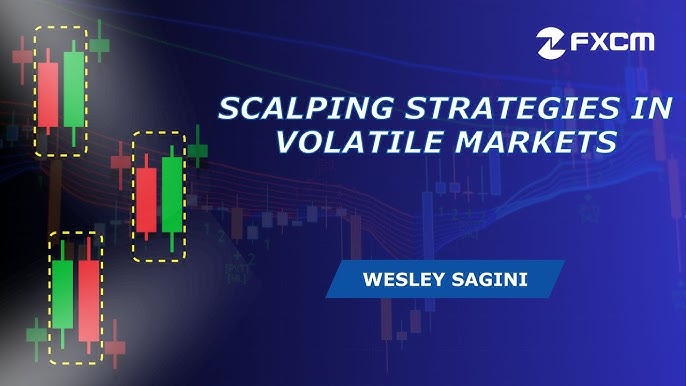Did you know that the average person spends about 12 hours a week just waiting in line? Well, in scalping, every second counts, and understanding market conditions can make the difference between profit and loss. In this article, we delve into the essential factors for scalping success, including key market conditions, the impact of volatility and liquidity, and the importance of monitoring specific indicators. We'll explore how economic news and global events shape trading opportunities, along with the best timeframes and strategies for different asset classes. Furthermore, we’ll highlight common pitfalls and the role of technical analysis in refining your approach. With insights from DayTradingBusiness, you'll become equipped to maximize your scalping strategies under various market conditions.
What are the key market conditions for successful scalping?
Key market conditions for successful scalping include high liquidity, minimal slippage, and low transaction costs. Look for tight bid-ask spreads and significant volume in the asset. Favor volatile markets with rapid price movements, as these offer more opportunities for quick trades. Additionally, ensure that market trends are clear to enhance decision-making. Timing is crucial; scalping works best during active trading hours when volatility peaks.
How does volatility impact scalping strategies?
Volatility directly influences scalping strategies by creating more opportunities for quick price movements. Higher volatility means larger price swings, allowing scalpers to enter and exit trades rapidly for profit. However, it also increases risk, as price can move against a position just as quickly. Scalpers often thrive in volatile conditions but must manage risk carefully, using tight stop-loss orders to protect against sudden reversals. In stable, low-volatility markets, scalpers may struggle to find suitable trades, as price movements are minimal. Thus, understanding and adapting to market volatility is crucial for successful scalping.
What role does liquidity play in scalping success?
Liquidity is crucial for scalping success because it allows traders to enter and exit positions quickly without significant price slippage. High liquidity ensures tighter spreads, which means lower transaction costs and better profit margins. In liquid markets, traders can execute multiple trades efficiently, capitalizing on small price movements. A lack of liquidity can lead to increased volatility and potential losses, making it harder to execute a successful scalping strategy.
Which market indicators should scalpers monitor?
Scalpers should monitor the following market indicators:
1. Volume: High trading volume indicates strong market interest and potential price movement.
2. Volatility: Look for indicators like the Average True Range (ATR) to gauge price fluctuations.
3. Price Action: Watch for candlestick patterns and support/resistance levels to identify entry and exit points.
4. Moving Averages: Short-term moving averages (like the 5 or 10-period) can help identify trends quickly.
5. Order Flow: Analyze the order book to see real-time buy/sell activity.
6. Economic News: Be aware of scheduled news events that can cause sudden market shifts.
7. Market Depth: Check the depth of market (DOM) to assess liquidity and potential price levels.
Focusing on these indicators can enhance scalping strategies significantly.
How can economic news affect scalping opportunities?
Economic news can create volatility in the markets, leading to sharp price movements that scalpers can exploit. Positive or negative reports, like employment data or GDP growth, can trigger rapid changes in asset prices. Scalpers thrive on these quick movements, entering and exiting trades to capitalize on small price fluctuations. Additionally, anticipating market reactions to upcoming news can provide scalpers with opportunities to position themselves advantageously before the news is released. Understanding how different economic indicators impact market conditions is crucial for identifying profitable scalping chances.
What timeframes are best for scalping in the markets?
The best timeframes for scalping in the markets are typically 1-minute to 5-minute charts. These short intervals allow traders to capitalize on small price movements quickly. Look for high volatility and liquidity during peak trading hours, such as the first hour after the market opens or during major news releases. This combination enhances the chances of successful scalping trades.
How do different asset classes impact scalping strategies?
Different asset classes impact scalping strategies by influencing volatility, liquidity, and spread. For instance, forex pairs typically offer high liquidity and tight spreads, making them ideal for quick trades. In contrast, stocks may have wider spreads and lower liquidity, affecting entry and exit points. Commodities can be volatile, which may present both opportunities and risks for scalpers. Understanding these characteristics helps traders choose the right asset class for effective scalping based on market conditions.
What are the risks associated with scalping in volatile markets?

Scalping in volatile markets carries several risks. First, rapid price swings can lead to significant losses if trades are executed poorly. Second, slippage may occur, causing trades to be filled at worse prices than expected. Third, high transaction costs can erode profits due to frequent trading. Fourth, emotional stress from quick decision-making can result in mistakes. Lastly, unexpected news events can disrupt market conditions, leading to sudden losses.
How can traders identify optimal entry and exit points for scalping?
Traders can identify optimal entry and exit points for scalping by analyzing market conditions through several key strategies:
1. Technical Indicators: Use indicators like moving averages, RSI, and MACD to spot trends and reversals. Look for overbought or oversold signals.
2. Price Action: Pay attention to support and resistance levels. Enter when prices bounce off support or break resistance.
3. Volume Analysis: High trading volume can confirm signals. Look for spikes in volume to validate entry and exit points.
4. Timeframes: Focus on shorter timeframes (1-5 minutes) for precise entries and exits. Adjust strategies based on market volatility.
5. News Events: Be aware of economic news releases that can cause volatility. Enter trades before news announcements for potential quick gains.
6. Market Sentiment: Gauge market sentiment through social media and trader forums. Positive or negative sentiment can influence price movements.
By combining these methods, traders can enhance their chances of successful scalping.
What Day Trading Scalping Strategies Work Best in Different Market Conditions?
The best day trading scalping strategies include:
1. **Using Technical Indicators**: Utilize indicators like moving averages, RSI, and MACD to identify entry and exit points.
2. **High-Frequency Trading**: Focus on stocks with high volatility and liquidity to capitalize on small price movements.
3. **Scalping on News Events**: Trade around earnings reports or economic announcements for quick profits.
4. **Tight Stop-Loss Orders**: Implement strict stop-loss orders to minimize losses on rapid movements.
5. **Level 2 Trading**: Monitor order books to gauge market depth and make informed decisions.
6. **Momentum Trading**: Identify and ride short-term trends to maximize gains quickly.
Understanding market conditions, such as volatility and liquidity, is crucial for successful scalping.
Learn more about: What Are the Best Day Trading Scalping Strategies?
Learn about Day Trading Strategies for Different Market Types
What tools and platforms are best for scalping?

The best tools and platforms for scalping include:
1. TradingView: Offers advanced charting tools and real-time market data.
2. MetaTrader 4/5: Popular for its execution speed and customizable indicators.
3. Thinkorswim: Great for options and stock scalping with robust analysis tools.
4. NinjaTrader: Ideal for futures and forex scalping, with fast order execution.
5. Interactive Brokers: Low commissions and high-speed trading capabilities.
6. cTrader: Known for its intuitive interface and advanced trading features.
Choose a platform that provides low latency, quick order execution, and reliable market data to enhance your scalping strategy.
How does market sentiment influence scalping decisions?
Market sentiment influences scalping decisions by dictating price movements and volatility. Positive sentiment can lead to upward price momentum, encouraging scalpers to buy quickly for profit. Conversely, negative sentiment often results in sudden drops, prompting scalpers to sell short. Traders analyze indicators like news events, social media trends, and economic data to gauge sentiment. A strong understanding of market psychology helps scalpers identify potential entry and exit points effectively.
What common mistakes do scalpers make regarding market conditions?
Scalpers often make several common mistakes related to market conditions:
1. Ignoring volatility: They may trade during low volatility periods, missing opportunities for quick profits.
2. Overtrading: Scalpers might enter too many trades without assessing market trends, leading to losses.
3. Misjudging liquidity: They can underestimate the importance of liquidity, causing slippage and poor execution.
4. Neglecting news events: Failing to account for economic announcements can lead to unexpected market movements.
5. Lack of risk management: Scalpers often do not set stop-loss orders, exposing themselves to larger losses than intended.
Avoiding these pitfalls can enhance scalping success.
How can technical analysis aid in understanding market conditions for scalping?
Technical analysis helps scalpers identify short-term price movements by using charts, indicators, and patterns. It reveals trends, support and resistance levels, and volatility, allowing traders to make quick, informed decisions. Key indicators like moving averages, RSI, and MACD can signal entry and exit points. By analyzing volume and price action, scalpers can gauge market strength and momentum, ensuring they capitalize on small price changes effectively.
What are the benefits of scalping during specific market hours?

Scalping during specific market hours offers several benefits. First, volatility is often higher during major market openings, providing more price movement for quick trades. Second, liquidity tends to increase, ensuring tighter spreads and easier order execution. Third, certain news releases can create sharp price reactions, presenting opportunities for scalpers to capitalize on rapid shifts. Finally, trading during these hours allows for better risk management, as market participants are more active and responsive.
How do global events affect market conditions for scalping?
Global events significantly impact market conditions for scalping by creating volatility and liquidity changes. Events like economic reports, geopolitical tensions, or natural disasters can lead to rapid price movements, providing scalpers with opportunities to capitalize on short-term fluctuations. High volatility can increase the number of trades available, but it can also raise risks. Scalpers need to stay informed about news releases and global events to make quick decisions and adjust their strategies accordingly.
Learn about How Market Conditions Affect HFT Strategies
How can a trader adapt their scalping strategy to changing market conditions?
A trader can adapt their scalping strategy to changing market conditions by:
1. Analyzing Volatility: Increase or decrease trade frequency based on market volatility. In high volatility, focus on quick entries and exits; in low volatility, consider wider stop losses.
2. Adjusting Timeframes: Use shorter timeframes during fast-moving markets and longer ones when the market is stable to capture bigger price movements.
3. Monitoring News: Stay updated on economic indicators and news that can affect market sentiment. Adjust trading hours around major announcements.
4. Adapting Indicators: Modify technical indicators based on current trends. Use momentum indicators during trending markets and oscillators in sideways markets.
5. Risk Management: Change position sizes and stop-loss levels based on the perceived risk of the current market environment.
6. Market Structure Awareness: Pay attention to support and resistance levels; adapt entry and exit strategies accordingly as these levels shift.
By continuously assessing these factors, traders can maintain an effective scalping strategy tailored to prevailing market conditions.
Conclusion about Understanding Market Conditions for Scalping Success
In summary, successful scalping hinges on a keen understanding of market conditions, including volatility, liquidity, and economic influences. Traders should closely monitor key indicators and adapt their strategies based on timeframes and asset classes for maximum effectiveness. Awareness of market sentiment and potential risks is essential in making informed decisions. By leveraging technical analysis and the right tools, traders can enhance their scalping success. For comprehensive insights and strategies tailored to your trading journey, DayTradingBusiness is here to support your growth in this dynamic landscape.